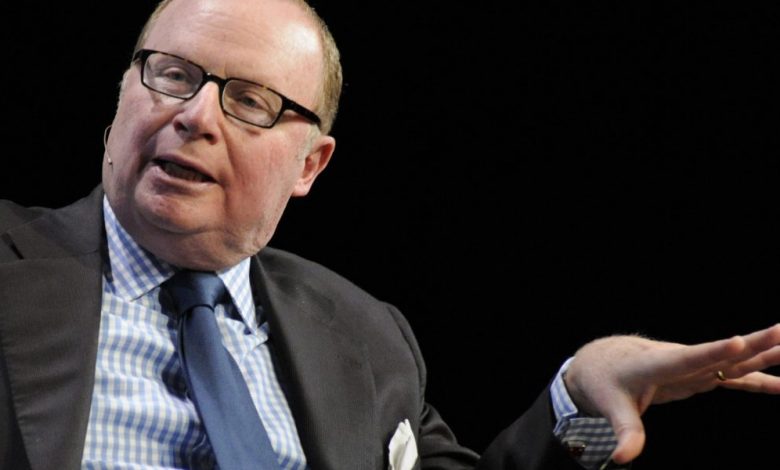Thomas H. Lee, leveraged buyout legend, dies aged 78

Before anyone else there was Thomas H. Lee and the company that bore his name.
Lee, a billionaire whose best-known transaction was a 334% return on equity from his purchase of Snapple Beverage Corp. in 1992, died Thursday at his New York office at the age of 78. His death was ruled a gunshot suicide, Julie Bolcer, a spokeswoman for the New York office of the chief medical examiner, said in an email.
Sadness quickly spread among those on Wall Street who knew him best. Todd Abbrecht and Scott Sperling, co-CEOs of Lee’s previous company, now known as THL, remembered him as a “generous and kind person.” At Lee Equity Partners’ New York office, a woman cried on the phone as she said the firm declined to comment on his death.
With $150,000 from an inheritance and a loan from his brother, he founded Boston-based Thomas H. Lee Partners in 1974 and ran the firm until 2006.
Lee broke away from his eponymous company that year and left to form a new one, Lee Equity. He didn’t take his name with him.
Through both firms, Lee has invested more than $15 billion in hundreds of transactions through 2020. This included his famous Snapple deal.
His company bought Snapple in 1992 for $135 million, investing just $28 million of their own money. Lee sold it to Quaker Oats Co. for $1.7 billion two years later after growing annual sales from $95 million to $750 million.
According to a 1997 Forbes profile, his Snapple return on equity was 334% after his firm took $927 million from the sale. With such gains, Lee was worth $2 billion by 2022, according to Forbes.
‘icon figure’
Lee, who was often spotted cigar-chomping in the office, took a private equity approach to targeting mid-cap companies with growth potential in sales of $300 million to $3 billion. One of his favorite aphorisms was: You’re better off paying a high price for a great company than getting a mediocre company at a bargain price.
With this philosophy, one of his early successes was the 1985 acquisition of Sterling Jewelers based in Akron, Ohio. Other deals at his first company included General Nutrition Cos. in 1989.
In 2005, he partnered with other private equity firms to purchase Dunkin’ Brands, which franchised Dunkin’ Donuts and Baskin-Robbins ice cream parlors, for $2.4 billion.
investment formula
Lee stuck to his basic investment formula when he founded Lee Equity. It invested in Deb Shops, a junior fashion retailer, took Edelman Financial Group private in 2012, and made a big bet on Papa Murphy’s International, a take-and-bake pizza chain.
According to Edgar Bronfman Jr., who worked with Lee to buy Warner Music Group in 2004, Lee often stayed out of the spotlight when deals were reported.
He said Lee’s philosophy is: You don’t have to win if you can get everything you want. Let the other party have the social and press victories.
“Tom’s focus has always been on the bottom line for his investors, not his personal profile,” Bronfman told Bloomberg in 2014.
There were some mistakes along the way that Lee usually pointed out to potential investors when pitching a new deal. A $500 million investment in 1999 in insurer Conseco Inc. fell through when it filed for bankruptcy protection three years later.
Lee’s firm was also rocked by the $507 million investment in Refco Inc., the US futures and commodities brokerage firm. Refco filed for bankruptcy protection after announcing in 2005 that its chief executive had been hiding $430 million in debt for years.
Outside of work, Lee was an avid art collector, owning works by artists such as Willem de Kooning and Jackson Pollock, and was a trustee of Lincoln Center and the Museum of Modern Art, according to Forbes.
Lee was born in Washington to Herbert and the former Mildred Schiff. His father worked for the Shoe Corporation of America, which was founded by his father-in-law, Robert Schiff. Lee graduated from Harvard College in 1965 with a bachelor’s degree in economics.
Prior to his private equity career, he spent eight years at First National Bank of Boston, where he rose to vice president in 1973 and specialized in lending to technology companies.
His first wife was Barbara Fish. They divorced in 1995 after having two children, Zach and Robbie, in 27 years of marriage. He later married Ann Tenenbaum. They had three children: Jesse, Nathan and Rosalie.
Learn how to navigate and build trust in your organization with The Trust Factor, a weekly newsletter exploring what leaders need to succeed. Login here.



